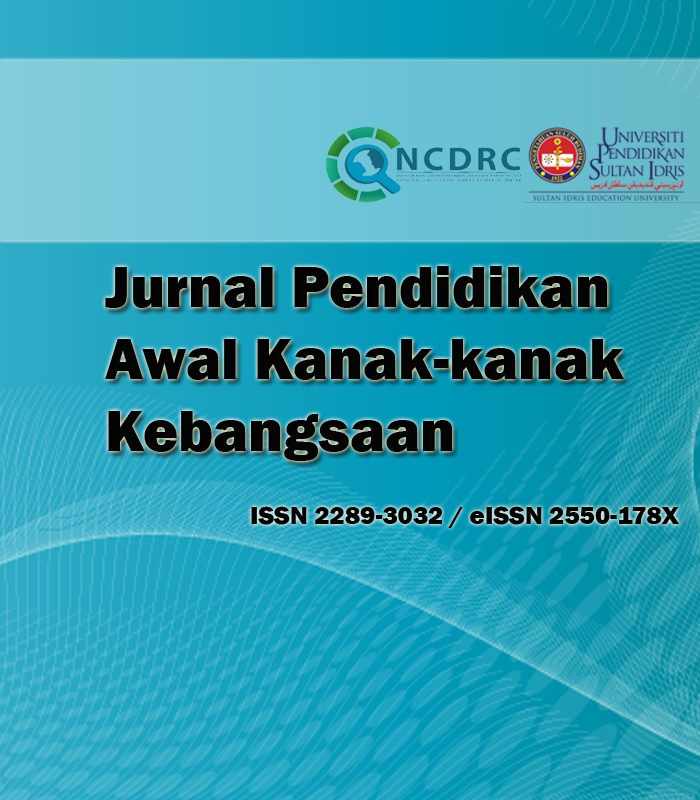Children and Adolescents’ Use of Internet: Psychological Issues and Challenges
DOI:
https://doi.org/10.37134/jpak.vol12.1.1.2023Keywords:
Technology, internet use, children, islamic viewAbstract
Technological advancement and the Internet are two-edged swords. Children and adolescents across the world have turned to the internet and digital technologies as a result of the pandemic COVID-19. Despite the benefits, technology advancement has a negative impact. There are many factors contributing to the use of internet among children and adolescents as well as the hazards associated with the over-usage of the digital technology. Studies also investigate the psychological effects of internet use on children and adolescents, which include physical, social, cognitive and emotional effects. This paper highlights the discussion of Islam as a way of encountering the issues and challenges faced as a result of the internet usage. Islam recognises the advent of technological tools to facilitate lives and provides general guidelines in using modern technology such as internet. This is paralleled with the role of human as a vicegerent on earth, which calls for good and prevents evildoing, in which can be materialised by using the internet effectively. The article outlines the concluding remarks.
Downloads
References
Abdul, M. (2016). Pengaruh media massa terhadap akhlak pelajar. International Conference on Education, Islamic Studies, and Social Sciences Research, Unsyiah, Banda Aceh Indonesia.
Al Mazmi, M., Aslam, H., & Rajan, A.V.(2013). The influence of technology on childrens health. International Conference on Technology and Business Management, March 18-20,1226-1235.
Anderson, E., Steen, E & Stavropoulos, V. (2017). internet use and problematic internet use:a systematic review of longitudinal research trends in adolescence and emergent adulthood. International Journal of Adolescence and Youth 22 (4), 430-454.
Annette, V.H., Regina, J.J.M., Eijnden, A. J., & Rooij, D. (2012). Meeting online contacts in real life among adolescents: The predictive role of psychosocial wellbeing and internet- specific parenting. Computers in Human Behavior 28 (2),465-472.
Azizi,Y., Gooh, M.L., & Halimah, M. (2014). Pengaruh media berunsur agresif dan kesannya terhadap tingkah laku pelajar di sekolah menengah. National Action Research Conference 2014, Official Conference Proceeding, Melaka, 25-26 Jun 2014.
Cheung, C., Bedford, R., & Saez De Urabain, I. (2017). Daily touchscreen use in infants and toddlers is associated with reduced sleep and delayed sleep onset. Sci Rep 7, 46104. https://doi.org/10.1038/srep46104.
Christakis, D.A. (2011). The effects of fast-paced cartoons. Pediatrics 128(4),772-4.
Danil, J., & Mohamed, S. (2021). Perubahan Tingkah Laku Kanak-kanak Disebabkan Penggunaan Gajet. Jurnal Dunia Pendidikan 3(2),200-209.
Department of Statistics, Malaysia (12 April, 2021).
Dullabib, A.N.F., Mangundjaya, S.H., & Artalina, N.P.A.D. (2018). Pola perilaku adiksi pada remaja laki-laki. Laporan Penelitian. Surabaya: Fakultas Psikologi Universitas Airlangga.
Hidayatul Akmal Ahmad. (2014). Makanan penentu perkembangan fizikal dan mental. Harian Metro. Retrieved from http://www1.hmetro.com.my/node/14349.
Higgins, S., Xiao, Z., & Katsipataki, M. 2012. The impact of digital technology on learning: a summary for the Education Endowment Foundation. Durham: Education Endowment Foundation and Durham University.
Hsin, C.T., Li, M.C., & Tsai, C.C. (2014). The influence of young children’s use of technology on their learning: a review. Educational Technology & Society 17 (4),85–99.
Ika Destiana, Ali Salman dan Mohd Helmi Abd Rahim (2013). Penerimaan media sosial: kajian dalam kalangan pelajar universiti Di Palembang. Jurnal Kemanusiaan 29(2),125-140.
Kabali, H.K., Irigoyen, M.M., Nunez-Davis. R., Budacki. J.G., Mohanty, S.H., Leister, K.P. & Bonner R.L. (2015). Exposure and use of mobile media devices by young children. Pediatrics 136(6),1044-50.
Karow, E. (2014). Childhood cognitive development & media use. Retrieved from http://www.oakhall.org/.
Livingstone, S., Haddon, L., Görzig, A., and Ólafsson. (2011). Risks and safety on the internet: the perspective of European children: full findings and policy implications from the EU Kids Online survey of 9–16-year-olds and their parents in 25 countries. EU Kids Online, Deliverable D4. EU Kids Online Network, London, UK
Malaysian Communications and Multimedia Commission (2018, 2020).
Mariani Md Nor. (2011). “60,000 pelajar kita ketagih FB”. Berita Harian. http://www.bharian.com.my/bharian/articles/60_000pelajarkitaketagihFB/Article.
Mayara. R.M., Isac., Sérgio.A.A., Mônica N.,Maurício, C.S & Alcir F.S.(2018). Internet addiction and its correlation with behavioral problems and functional impairments – A cross-sectional study. Jornal Brasileiro de Psiquiatria 67(1),34-38.
Norruzeyati Che Mohd Nasir, Mohammad Rahim Kamaluddin, Mohd Alif Jasni & Hezzrin Mohd Pauzi. (2021). Lebihan berat badan dan obesiti dalam kalangan. Jurnal of Sosial Science and Humanity 18 (6), 161-174.
Orestes, P. M. (2002). Song to Avoid After the Tragedy. London: SAGE Publications.
Panger, G. T. (2017). Emotion in Social Media. UC Berkeley. Capaian pada 12 Feb 2023 daripada https://escholarship.org/uc/item/1h97773d
Peng Chew, F., & Fikri Ismail, M. (2020). Pelaksanaan pendekatan bermain dalam pengajaran dan pembelajaran Bahasa Melayu murid prasekolah. Jurnal Pendidikan Awal Kanak-Kanak Kebangsaan 9 (1),14-25.
Ramírez S, Gana S, Garcés S, Zúñiga T, Araya R, Gaete J. (2021). Use of technology and its association with academic performance and life satisfaction among children and adolescents. Front Psychiatry 12,1-12.
Rezki, P.S., Salhah, A & Dini, F.B (2009). Penerapan nilai-nilai Islam melalui penggunaan media dalam pendidikan. Kertas Kerja Seminar Kebangsaan Media dan Pemikiran Islam (MIST 2009). 21-22 Julai.
Rosenfield, M. (2011). Computer vision syndrome: a review of ocular causes and potential treatments. Ophthalmic Physiol Opt 31,502–515.
Santrok, J. (2020). Children. London: McGraw Hill.
Shima Dyana & Siti Marziah (2018). Kesan penggunaan gajet kepada perkembangan kognitif dan sosial kanak-kanak prasekolah. Jurnal Wacana Sarjana 2(4), 1-6.
Singman, A. (2012). The impact of screen media on children: a eurovision for parliament. Improving the Quality of Childhood in Europe 2,88-121.
Small, G. & Vorgan, G. (2008). Surviving the technological alteration of the modern mind. New York: HarperCollins.
Sood, S. (2020). Psychological effects of the coronavirus disease-2019 pandemic. RHiME7, 23-26.
Thorn. (2021). Self-Generated Child Sexual Abuse Material: Youth Attitudes and Experiences in 2020. Available at:https://info.thorn.org/hubfs/Research/SGCSAM_Attitudes&Experiences_YouthMonitoring_FullReport_2021.pdf
Wan Anita & Azizah Hamzah. (2013). Media dalam kehidupan dan perkembangan kanak-kanak. Jurnal Pengajian Media Malaysia 15 (2), 27–39.
Downloads
Published
How to Cite
Issue
Section
License
Copyright (c) 2023 Nurhafizah Mohd Sukor, Nor Hamizah Razak

This work is licensed under a Creative Commons Attribution-NonCommercial-ShareAlike 4.0 International License.





